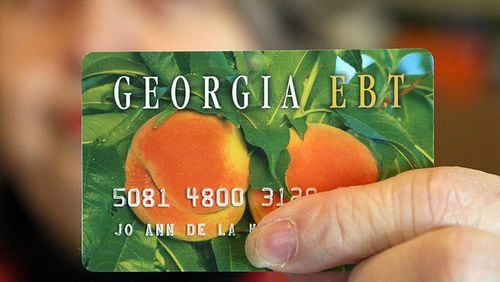Changes to Georgia's food stamp program since January 2016 have many wondering how this federally funded program works. New regulations begun in January of that year affected Cobb, Gwinnett and Hall county "able-bodied" childless adults. The new program states that these adults can collect food stamps for only three months in a three-year period, unless they get a job or into a training program. In 2017 another 21 counties joined the initial three, and the current plan is to have all of Georgia's 159 counties covered by these same rules by 2019.
But what if you've never received food stamps before? Here are some details that might surprise you.
1. SNAP is a new name. Food stamps were renamed the Supplemental Nutrition Assistance Program in 2008. SNAP offers nutrition assistance to about 43 million eligible, low-income individuals and families nationwide. The program is funded by the federal government through the United States Department of Agriculture, through their Food and Nutrition Service. Every state, plus Washington, D.C., Guam and the Virgin Islands, operates SNAP to benefit people living in that state. In Georgia, the program is administered through the Department of Family and Children Services to about 1.6 million as of mid-2017.
2. It's on a card. If you qualify for SNAP, you receive an Electronic Benefit Transfer card that can be used like cash at most grocery stores and farmers markets to buy food.
3. Food only. The program cannot be used to buy paper products. That means no paper towels, toilet paper, vitamins, medicine, shampoo, toothpaste, pet food, alcohol, cigarettes or tobacco. Pumpkins for Halloween are ineligible, but birthday cakes are allowed within limits. Seeds and plants that can produce food are also permitted.
4. You have to be poor by government standards. Your household must have no more than $2,250 in "countable resources." Your home and land do not count, but your car might. A complicated list of guidelines will help you determine if your car will count toward your eligibility. In general, if your wheels are worth more than $4,650, it counts. You're off the hook though if you happen to be living in your car.
5. They account for who's in the house. If you live with someone over 60 years old, or a disabled person, you are allowed up to $3,250 in resources.
6. You can only make so much money. You must have a gross income no more than 130 percent of the Federal poverty guideline. This means, for a family of three, the total amount of money you get before taxes cannot be more than about $2,184 per month. For smaller households it's less, and for bigger households it's more. If an elderly or disabled person lives with you, you don't need to meet this requirement.
7. Eligibility depends on where your money goes. You must have a net income no more than 100 percent of the Federal poverty guideline. Money spent on allowable deductions, like rent and childcare, don't count, because you can't spend it on food. For a family of three, the net income guideline is $1,680 a month.
8. Social Security number required. Every household member who wants to get SNAP benefits must have a Social Security Number, or apply for one. But a person in the household who does not want SNAP benefits doesn't have to have a number. However, that person must still provide financial information if other household members are applying for SNAP benefits.
9. No citizenship needed. You do not need to be a U.S. citizen to receive SNAP benefits. You may qualify depending on your legal alien status.
10. The government penalizes cheaters. People who lie, cheat or falsify documents to obtain food stamps can be barred from the program for one year or permanently, fined up to $250,000, imprisoned up to 20 years or both. Any household member who intentionally breaks the rules may not receive benefits for one year for the first offense, two years for the second offense, and permanently for the third offense.
11. It's less than $300 per month for food. According to an analysis of 2014 data, the average family in Georgia on food stamps received about $281 a month. For the average month of 30 days, at three meals a day, that's about $3.12 per meal for the entire family. For Fiscal 2017 the average national household monthly payout is $252.80.
For more information on eligibility and recent changes in Georgia and how to apply for food stamps, or SNAP, visit the Department of Family and Children Services.
About the Author






